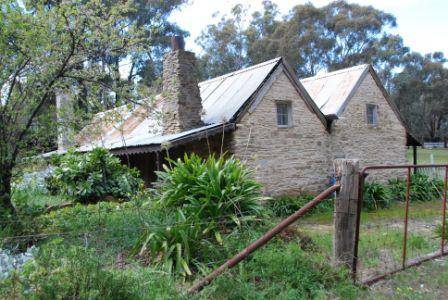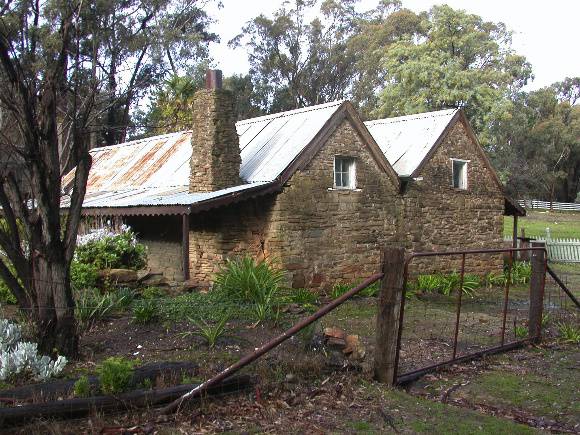| Back to search results » | Back to search page » |
|
Former Samson Family Residence
Other NameDoye's Cottage Location21 Doye Street,, BENDIGO VIC 3550 - Property No B7330
File NumberB7330LevelState |
|
Statement of Significance
What is significant? The former Samson Family Residence is a mainly sandstone rubble stone building with a corrugated iron roof, with outbuildings, retaining walls, a well, water race, and front and rear gardens. It appears that the first two rooms (under the southern gable) date from the 1850s, while the northern gabled section dates from after 1866. The original timber shingles survive under the later corrugated iron. There are low pitched verandahs both to the north and south with stone paving, the northern one extending to the east to link up various stone and weatherboard skillion roofed additions. The cottage is cut into the slope to the north and east, with high retaining walls holding back the soil on both sides. The interior is extremely basic, with mainly dirt floors, painted rough stone walls and ceiling boards following the line of the roof. Apart from a few probably 20th century chimneys and a gas stove, the house appears little changed since the 19th century.
There are some outbuildings from various periods to the north and east and rudimentary garden layouts to the north and south.
Thomas Samson, a shoemaker turned joiner, came to the Bendigo goldfields in the mid 1850s and took up a miner's right in Spec(k) Gully in the mid-1850s, and probably built the first stage of the cottage at this time on a miner's right site below Specimen Hill, south west of what became central Bendigo. He worked as a miner until about 1871 then returned to boot making from the property. From 1889 he was a partner in a shop a few blocks closer to the centre of town, and died in 1894. With his wife Sarah they had 10 children and she remained in the cottage until 1906. Albert and Florence Doye purchased the site in 1908 and lived there with their family until 1966. It was renovated by a tenant in the 1970s and passed from miner's right to freehold in 1974. It is now owned by Arthur Doye.
How is it significant? Former Samson Family Residence is significant for historic and architectural reasons at the State level.
Why is it significant? The former Samson Family Residence is historically and architecturally significant asthe dwelling of a family of simple means that appears largely unchanged since the 19th century. The first part of the house dates from the initial gold rush era in Victoria in the mid 1850s and perhaps uniquely demonstrates the early domestic conditions of the first mining families of the goldfields in the region. It is also directly associated with this early phase of surface mining through the nearby mine workings and other infrastructure such as the water race. The residence as a whole exemplifies the evolution of a family home and the range of activities involved in providing for a working class family.
Thehouse is architecturally significant for its ability to demonstrate characteristic vernacular design and construction as seen in the rubble stone work, low verandahs and timber roof shingles of the goldfields era and for its very high level of integrity.
Classified: 01/06/2009
Group
Residential buildings (private)
Category
Residence





